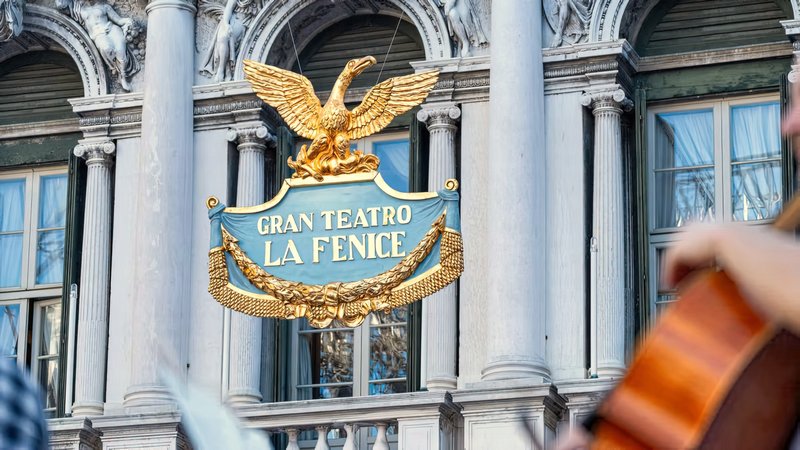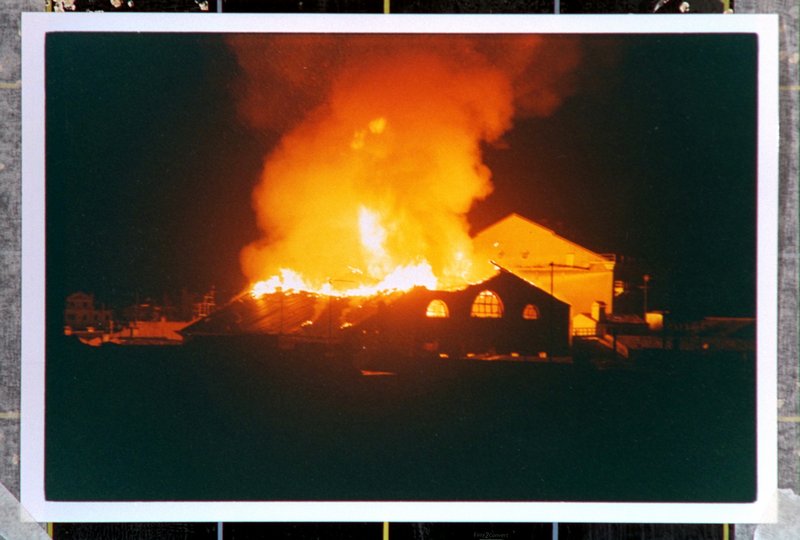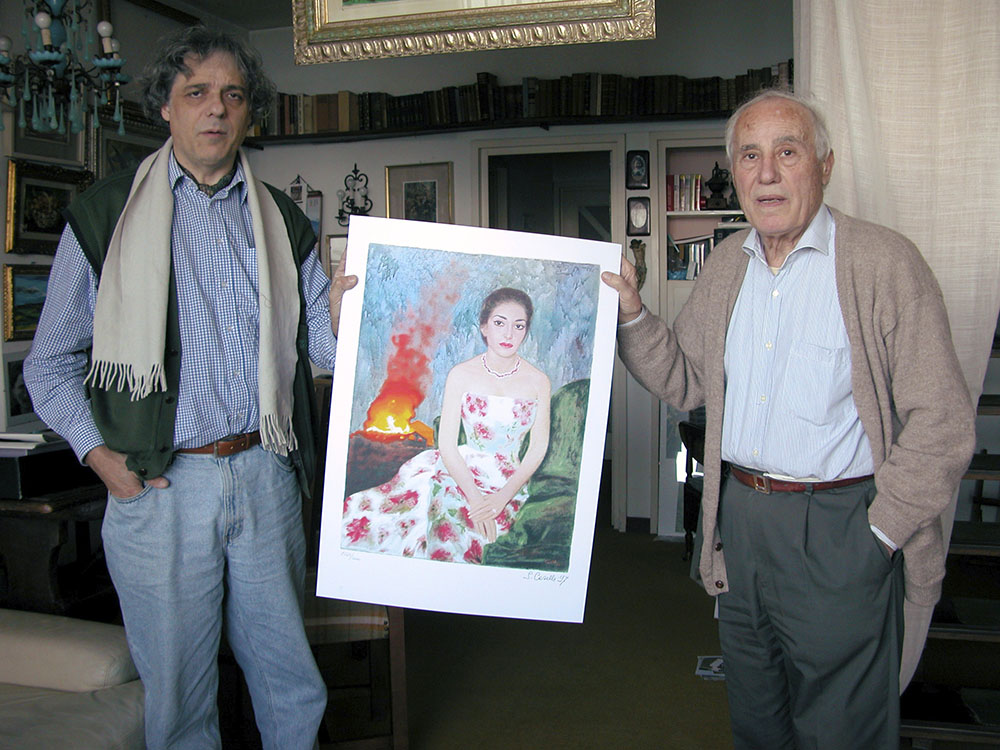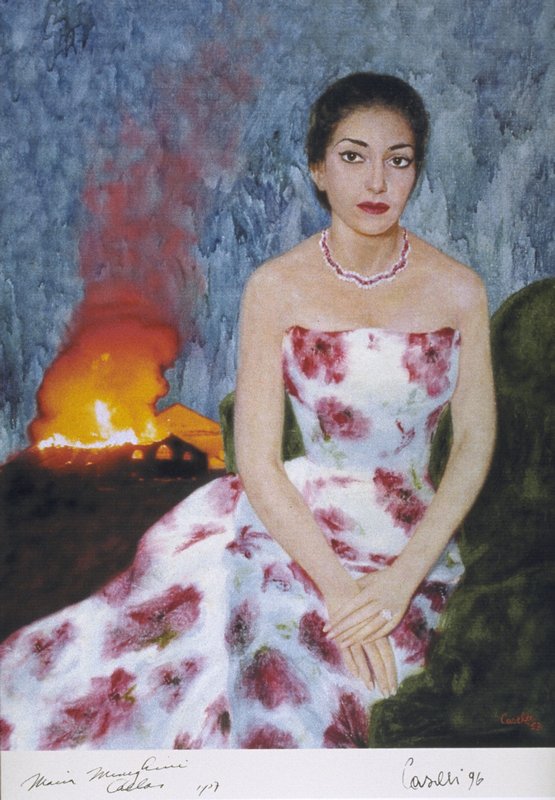On January 29, 1996, in a dreadful fire, the Teatro La Fenice in Venice was fully destroyed.
The Callas' original painting, which was stored in one of La Fenice repositories, was reduced to ashes too.
In the first days of March 1996, Roberto Delpiano - who was already working with Bruno Tosi for exhibition panels for both Callas and the Barber of Seville exhibit materials - discussed with Tosi the possibility of replacing the destroyed painting with a new work of art.
And it was thought to add the image of the fire at La Fenice, to represent the fire that always had burned inside Maria Callas, and that had made her the greatest and inimitable soprano of all times.
Silvano Caselli was contacted in the early months of 1996 and he too, sad for the final fate of the painting with which he had emotional ties, agreed to participate in the reconstruction through the screen printing process.
All the more reason, as there was an international event of no small importance coming up, the 1997 inauguration of the Tokyo Opera House, it would have been a very welcome opportunity to be possible to offer Callas' silkscreenings to a Japanese public which loves Italian Opera so much, and Maria Callas in particular.
Silvano Caselli therefore fully agreed and offered his full participation.



